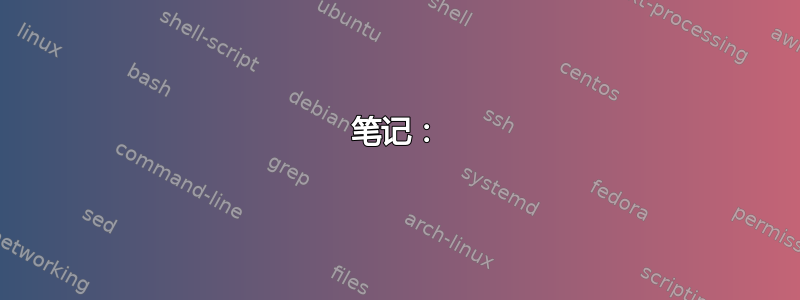
\documentclass{article}
\usepackage{amsmath, amssymb}
\usepackage[many]{tcolorbox}
\usepackage{lipsum}
\definecolor{myblue}{RGB}{0,163,243}
\newtcolorbox[auto counter,number within=section]{exo}[1][]{
enhanced jigsaw,colback=white,colframe=myblue,coltitle=myblue,
fonttitle=\bfseries\sffamily,
sharp corners,
detach title,
leftrule=18mm,
underlay unbroken and first={\node[below,text=white,font=\sffamily\bfseries,align=center]
at ([xshift=-11mm,yshift=-1mm]interior.north west) {Exercice\\\thetcbcounter};},
breakable,pad at break=1mm,
#1,
code={\ifdefempty{\tcbtitletext}{}{\tcbset{before upper={\tcbtitle\par\medskip}}}},
}
\begin{document}
\begin{exo}[title= Espaces vectoriels calcul de dimension]
Soit $E$ un $\mathbb{K}$-espace vectoriel de dimension finie, $g$ et $h$ deux endomorphismes de E. On pose :$$\mathcal{F}=\lbrace f\in\mathcal{L}(E) \text{tel que} : h\circ f\circ g = 0\rbrace$$
\begin{enumerate}
\item Vérifier que $\mathcal{F}$ est un sous-espace vectoriel de $\mathcal{L}(E)$.
\item On suppose dans cette question que $h=id_E$. Soit $S$ un supplémentaire de $\ker(g)$ dans $E$.
\begin{itemize}
\item Montrer que l'application $\Phi:\mathcal{F}\rightarrow \mathcal{L}(S,E), f\mapsto f_{/S}$ est un isomorphisme d'espaces vectoriels.
\item En déduire la dimension de $\mathcal{F}$ dans ce cas
\end{itemize}
\item Calculer la dimension de $\mathcal{F}$ lorsque $g=id_E$ .
\item Calculer $\dim\mathcal{F}$ dans le cas général.
\end{enumerate}
\end{exo}
\end{document}
答案1
欢迎来到 TeX.SE!
您的exo环境已经大到可以自然扩展的程度。我的意思是,它正在扩展所有\textwidth可用空间。如果您想进一步扩展宽度,您将收到警告,提示您超出了页面范围(并进入了页边距)。我并不是建议这样做,但我提供了一个允许您这样做的示例。它还比较了您拥有的内容和我想出的内容。
另一个建议:减少边距并保留相同的代码。
\documentclass{article}
\usepackage{amsmath, amssymb}
\usepackage[many]{tcolorbox}
\usepackage{lipsum}
\usepackage{showframe}
\definecolor{myblue}{RGB}{0,163,243}
\newtcolorbox[auto counter,number within=section]{exo}[1][]{
enhanced jigsaw,colback=white,colframe=myblue,coltitle=myblue,
width=\textwidth, % You don't have this, but it doesn't change anything because what you have is the default
fonttitle=\bfseries\sffamily,
sharp corners,
detach title,
leftrule=18mm,
underlay unbroken and first={\node[below,text=white,font=\sffamily\bfseries,align=center]
at ([xshift=-11mm,yshift=-1mm]interior.north west) {Exercice\\\thetcbcounter};},
breakable,pad at break=1mm,
#1,
code={\ifdefempty{\tcbtitletext}{}{\tcbset{before upper={\tcbtitle\par\medskip}}}},
}
% Newer tcolorbox environment
\newtcolorbox[auto counter,number within=section]{exoBigger}[1][]{
enhanced jigsaw,colback=white,colframe=myblue,coltitle=myblue,
width=\textwidth+4em, % Incremented by 2em
fonttitle=\bfseries\sffamily,
sharp corners,
detach title,
leftrule=18mm,
underlay unbroken and first={\node[below,text=white,font=\sffamily\bfseries,align=center]
at ([xshift=-11mm,yshift=-1mm]interior.north west) {Exercice\\\thetcbcounter};},
breakable,pad at break=1mm,
#1,
code={\ifdefempty{\tcbtitletext}{}{\tcbset{before upper={\tcbtitle\par\medskip}}}},
}
\begin{document}
\textbf{Original:}
\begin{exo}[title= Espaces vectoriels calcul de dimension]
Soit $E$ un $\mathbb{K}$-espace vectoriel de dimension finie, $g$ et $h$ deux endomorphismes de E. On pose :$$\mathcal{F}=\lbrace f\in\mathcal{L}(E) \text{tel que} : h\circ f\circ g = 0\rbrace$$
\begin{enumerate}
\item Vérifier que $\mathcal{F}$ est un sous-espace vectoriel de $\mathcal{L}(E)$.
\item On suppose dans cette question que $h=id_E$. Soit $S$ un supplémentaire de $\ker(g)$ dans $E$.
\begin{itemize}
\item Montrer que l'application $\Phi:\mathcal{F}\rightarrow \mathcal{L}(S,E), f\mapsto f_{/S}$ est un isomorphisme d'espaces vectoriels.
\item En déduire la dimension de $\mathcal{F}$ dans ce cas
\end{itemize}
\item Calculer la dimension de $\mathcal{F}$ lorsque $g=id_E$ .
\item Calculer $\dim\mathcal{F}$ dans le cas général.
\end{enumerate}
\end{exo}
\textbf{Modified:}
\begin{exoBigger}[title= Espaces vectoriels calcul de dimension]
Soit $E$ un $\mathbb{K}$-espace vectoriel de dimension finie, $g$ et $h$ deux endomorphismes de E. On pose :$$\mathcal{F}=\lbrace f\in\mathcal{L}(E) \text{tel que} : h\circ f\circ g = 0\rbrace$$
\begin{enumerate}
\item Vérifier que $\mathcal{F}$ est un sous-espace vectoriel de $\mathcal{L}(E)$.
\item On suppose dans cette question que $h=id_E$. Soit $S$ un supplémentaire de $\ker(g)$ dans $E$.
\begin{itemize}
\item Montrer que l'application $\Phi:\mathcal{F}\rightarrow \mathcal{L}(S,E), f\mapsto f_{/S}$ est un isomorphisme d'espaces vectoriels.
\item En déduire la dimension de $\mathcal{F}$ dans ce cas
\end{itemize}
\item Calculer la dimension de $\mathcal{F}$ lorsque $g=id_E$ .
\item Calculer $\dim\mathcal{F}$ dans le cas général.
\end{enumerate}
\end{exoBigger}
\end{document}
答案2
我猜你想增加名为 的环境width的。为此,你通常可以在 中添加选项。要扩展它,例如:tcolorboxexowidthexo tcolorbox
width=1.1\textwidth,
或者
width=\textwidth+2em,
利用该leftrule选项您可以增加width蓝色框的范围。
输出:
代码:
\documentclass{article}
\usepackage{amsmath, amssymb}
\usepackage[many]{tcolorbox}
\usepackage{lipsum}
\definecolor{myblue}{RGB}{0,163,243}
\newtcolorbox[auto counter,number within=section]{exo}[1][]{
center, % added
width=\textwidth+20em, % added
enhanced jigsaw,colback=white,colframe=myblue,coltitle=myblue,
fonttitle=\bfseries\sffamily,
sharp corners,
detach title,
leftrule=22mm, % changed
underlay unbroken and first={\node[below,text=white,font=\sffamily\bfseries,align=center]
at ([xshift=-11mm,yshift=-1mm]interior.north west) {Exercice\\\thetcbcounter};},
breakable,pad at break=1mm,
#1,
code={\ifdefempty{\tcbtitletext}{}{\tcbset{before upper={\tcbtitle\par\medskip}}}},
}
\begin{document}
\begin{exo}[title= Espaces vectoriels calcul de dimension]
Soit $E$ un $\mathbb{K}$-espace vectoriel de dimension finie, $g$ et $h$ deux endomorphismes de E. On pose :$$\mathcal{F}=\lbrace f\in\mathcal{L}(E) \text{tel que} : h\circ f\circ g = 0\rbrace$$
\begin{enumerate}
\item Vérifier que $\mathcal{F}$ est un sous-espace vectoriel de $\mathcal{L}(E)$.
\item On suppose dans cette question que $h=id_E$. Soit $S$ un supplémentaire de $\ker(g)$ dans $E$.
\begin{itemize}
\item Montrer que l'application $\Phi:\mathcal{F}\rightarrow \mathcal{L}(S,E), f\mapsto f_{/S}$ est un isomorphisme d'espaces vectoriels.
\item En déduire la dimension de $\mathcal{F}$ dans ce cas
\end{itemize}
\item Calculer la dimension de $\mathcal{F}$ lorsque $g=id_E$ .
\item Calculer $\dim\mathcal{F}$ dans le cas général.
\end{enumerate}
\end{exo}
\end{document}
笔记:
作为M. Al Jumaily说exo盒子里已经有了\textwidth。考虑警告,当然还有他的建议。
使用该包,geometry您可以分别更改左边距和右边距lmargin以及rmargin:
\usepackage[lmargin=.15in]{geometry}
输出:
代码:
\documentclass{article}
\usepackage{amsmath, amssymb}
\usepackage[lmargin=.15in]{geometry} % added
\usepackage[many]{tcolorbox}
\usepackage{lipsum}
\usepackage{showframe}
\definecolor{myblue}{RGB}{0,163,243}
\newtcolorbox[auto counter,number within=section]{exo}[1][]{
%center, % added
%width=\textwidth+5em, % added
enhanced jigsaw,colback=white,colframe=myblue,coltitle=myblue,
fonttitle=\bfseries\sffamily,
sharp corners,
detach title,
leftrule=22mm, % changed
underlay unbroken and first={\node[below,text=white,font=\sffamily\bfseries,align=center]
at ([xshift=-11mm,yshift=-1mm]interior.north west) {Exercice\\\thetcbcounter};},
breakable,pad at break=1mm,
#1,
code={\ifdefempty{\tcbtitletext}{}{\tcbset{before upper={\tcbtitle\par\medskip}}}},
}
\begin{document}
\begin{exo}[title= Espaces vectoriels calcul de dimension]
Soit $E$ un $\mathbb{K}$-espace vectoriel de dimension finie, $g$ et $h$ deux endomorphismes de E. On pose :$$\mathcal{F}=\lbrace f\in\mathcal{L}(E) \text{tel que} : h\circ f\circ g = 0\rbrace$$
\begin{enumerate}
\item Vérifier que $\mathcal{F}$ est un sous-espace vectoriel de $\mathcal{L}(E)$.
\item On suppose dans cette question que $h=id_E$. Soit $S$ un supplémentaire de $\ker(g)$ dans $E$.
\begin{itemize}
\item Montrer que l'application $\Phi:\mathcal{F}\rightarrow \mathcal{L}(S,E), f\mapsto f_{/S}$ est un isomorphisme d'espaces vectoriels.
\item En déduire la dimension de $\mathcal{F}$ dans ce cas
\end{itemize}
\item Calculer la dimension de $\mathcal{F}$ lorsque $g=id_E$ .
\item Calculer $\dim\mathcal{F}$ dans le cas général.
\end{enumerate}
\end{exo}
\end{document}





